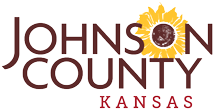Information
-
Document No.
-
Audit Title
-
Client / Site
-
Conducted on
-
Prepared by
-
Location
-
Personnel
-
Add location
-
Select date
-
Add signature
-
Add media
Chemical Safety (EPA)
-
There is an inventory list of all hazardous substances used in the workplace.
-
There is a written hazard communication program that includes Material Safety Data Sheets (MSDS), labeling, and employee training.
-
Each container for a hazardous substance (i.e., vats, bottles, storage tanks, etc.) is labeled with product identify and a hazard warning.
-
There is a Material Safety Data Sheet readily available for each hazardous substance used; employees can readily access the MSDS at all times.
-
There is an employee training program for hazardous substances.
-
A written policy exists that ensures MSDS are obtained for all products.
-
Products that are purchased or otherwise brought into the workplace are checked for approved uses, safe handling procedures and MSDSs.
-
Procedures are in place for dealing with substandard MSDS and/or chemicals that are brought into the workplace without an MSDS.
-
Procedures are in place for labeling containers into which a substance is decanted and not consumed immediately
-
The hazardous substances inventory is reviewed at a minimum of annually
-
The hazardous substances inventory is used in emergency planning
Electrical Safety (MIOSHA)
-
Contact electrical work specifies compliance with MIOSHA and/or local regulations
-
Employees have been properly trained in Lockout/Tagout
-
Portable electrical tools and equipment are either grounded or of the double insulated type
-
Extension cords have a grounded conductor
-
Multiple plug adapters are prohibited
-
Temporary circuits are protected by suitable disconnecting switches or plug connectors at the junction with permanent wiring
-
Exposed wiring and electrical cords with frayed or deteriorated insulation are repaired or replaced promptly (not taping)
-
The use of metal ladders is prohibited in areas where the ladder or the person using the ladder could come in contact with energized parts of equipment, fixtures or circuit conductors
-
All disconnecting switches and circuit breakers are labeled to indicate their use or equipment served
-
Disconnecting means are always opened before fuses are replaced
-
All energized parts of electrical circuits and equipment are guarded against accidental contact by approved cabinets or enclosures
-
Electrical enclosures such as switches, receptacles, and junction boxes are provided with tight fitting covers or plates
-
Electrical equipment is correctly grounded with 3-pronged plugs
-
Extension cords are not used for prolonged duration
-
Multi-plug power strips are UL-approved and breakered
-
Multi-plug power strips are not used in tandem
-
Circuit breaker panels and emergency shut-offs unobstructed (36 inch clearance) and unlocked
-
High wattage equipment (i.e., refrigerators, copiers) are plugged directly into wall outlets
-
Outlets within 6 feet of water source are GFCI protected
-
All high voltage oil containing transformers on the property are free of PCBs (Polychlorinated Biphenyls)
-
If working with greater than 50V (energized), an equipment-specific SOP (Specified Operating Procedures) is followed
Flammable and Combustible Materials (EPA)
-
Combustible scrap, debris, and waste materials (oily rags, etc.) are stored in covered metal receptacles and removed from the worksite promptly
-
Approved containers and tanks are used for the storage and handling of flammable and combustible liquids
-
Bulk drums of flammable liquids are grounded and bonded during dispensing
-
Storage rooms for flammable and combustible liquids are equipped with explosion-proof lights
-
Storage rooms for flammable and combustible liquids have mechanical or gravity ventilation
-
Storage rooms for flammable and combustible liquids are sloped, have troughs, or retaining walls to contain spills
-
Liquified petroleum gas is stored, handled, and used in accordance with safe practices and standards
-
Liquified petroleum storage tanks are guarded to prevent damage from vehicles
-
Solvent wastes and flammable liquids are kept in fire-resistant, covered containers until they are removed from the worksite
-
Vacuuming is used whenever possible rather than blowing or sweeping combustible dust (i.e. aluminum, magnesium)
-
"NO SMOKING" signs are posted where appropriate in areas where flammable or combustible materials are used or stored
-
"NO SMOKING" rules are enforced in areas involving storage and use of hazardous, flammable or combustible materials and smoking is not permitted within 50 feet
-
Spills of flammable or combustible liquids are cleaned up promptly and are disposed of properly
-
Fire extinguishers have been selected and provided for the types of materials in areas where they are to be used (Class A Ordinary combustible material fires; Class B Flammable liquid, gas or grease fires; Class C Energized-electrical fires; Class D Combustible Metals)
-
Storage tanks are equipped with emergency venting that will relieve excessive internal pressure by fire exposure
General Safety (MIOSHA)
-
Book shelves, filing cabinets in excess of 64 inches are secured
-
Hand washing soap and towels are available
-
Corridor doors are kept closed
-
Electrical cords, cables and cords are neatly secured under desks and out of the way of foot traffic
-
Food or beverages are only consumed in areas where there is no exposure to toxic or hazardous material, blood, or other potentially infectious materials
-
Only ladders with safety feet (non-sliding) are used
-
Step ladders are less than 20 feet in length
-
Aisleways are designated and permanently marked (i.e., in warehouses)
-
Mirrors are used to improve visibility at corners and intersections
-
Air pressure at the end if an air pressure gun does not exceed 30 psig and is equipped with a safety valve at the tip to allow air to escape
Hazardous Waste (EPA)
-
Hazardous waste is shipped by a licensed hauler from the facility
-
List the ID number issued by the local agency for the facility's hazardous waste program (in comments section)
-
Total quantity of hazardous waste disposed during the previous calendar year (please specify either kgs or lbs); list average monthly waste shipment
-
EHS completes and documents hazardous waste storage/treatment area in inspections on a weekly basis
-
Hazardous labels are dated and initialed prior to use
-
Only one drum/container is permitted in a satellite area
-
Waste containers are closed (bung tight, lids secure) at all times unless waste is being directly added to container
-
Hazardous waste drums are labeled with the accumulation start date, contents and the words "Hazardous Waste"
-
All satellite drums are moved to the central accumulation storage area within 3 days of their accumulation start date
-
Room or area is well-ventilated and hazardous warning signs are clearly posted
-
Sumps and secondary containment berms are sealed or lined, free of liquids and inspected at least annually for cracks and leaks
-
Outdoor garbage, waste steel and/or other wastes are covered (protected from the elements) and any runoff is contained and disposed of properly
-
Container are emptied completely of residual chemicals
-
Chemical containers are not thrown out in trash unless properly rinsed (if applicable)
-
Fire control, spill control, PPE, eyewash facilities are present in hazardous waste storage areas
-
Hazardous waste stored in drums with secondary containment that is free of liquids, sealed and capable of holding 110% of the largest container
-
A hazardous waste contingency plan and/or business emergency plan for chemical, fuel and waste storage is filed on-site and with local agencies. Indicate "yes" if required; "no" if incomplete; "not applicable" if not required
-
Oil/solvent-soaked rags are not thrown in the regular trash and are disposed of properly
-
Hazardous waste is not transported off site by internal employees
-
Employees who sign hazardous waste manifests have been properly trained and are certified as per local requirements
-
Hazardous wastes have been tested and/or otherwise characterized. A waste profile/list of permissible waste classes is on site at the facility. This also indicates any new waste streams
Spills (EPA)
-
All spills are cleaned up immediately
-
Spill equipment is available in fueling, chemical and hazardous material receiving and storage areas
-
Hazardous wastes generated from spill clean up are disposed of properly
Walking-Working Surfaces (MIOSHA)
-
A documented, functioning housekeeping program is in place
-
All worksites are clean, sanitary and orderly
-
All spilled hazardous materials or liquids, including blood and other potentially infectious materials are cleaned up immediately and according to proper procedures
-
Combustible scrap, debris and waste are stored safely and removed from the worksite properly
-
Accumulations of combustible dust are routinely removed, including from elevated surfaces such as beams, light fixtures, etc.
-
Metallic or conductive dust is prevented from entering or accumulating on or around electrical enclosures or equipment
-
Covered metal waste cans are used for oily and paint-soaked waste
-
Aisles and passageways are kept clear and are clearly delineated
-
Holes in the floor, sidewalk or other walking surface are repaired properly, covered or otherwise made safe
-
There is safe clearance for walking in aisles where motorized or mechanical handling equipment is operating
-
Materials or equipment are stored in such a way that sharp projectiles will not interfere with the walkway
-
Spilled materials are cleaned up immediately
-
There is adequate headroom provided for the entire length of any aisle or walkway
-
Standard guardrails are provided wherever aisle or walkway surfaces are elevated more than 30 inches above any adjacent floor or the ground
-
Stairways are at least 22 inches wide
-
Floor openings are guarded by a cover, a guardrail, or equivalent on all sides (except at entrance to stairways or ladders)
-
Standard stair rails or handrails are present on all stairways having four or more risers
-
Stairs have landing platforms that are not less than 30 inches in the direction of travel and extend 22 inches in width at every 12 feet or less of vertical rise
-
Step risers on stairs are uniform from top to bottom
-
Steps on stairs and stairways are designed or provided with assurance that renders them slip resistant
-
Stairway handrails are located between 30 and 34 inches above the leading edge of stair treads
-
Stairway handrails have at least 3 inches of clearance between the handrails and the wall or surface they are mounted on
-
Where doors or gates open directly on a stairway, there is a platform provided so the swing of the door does not reduce the width of the platform to less than 21 inches
-
Where stairs or stairways exit directly into any area where vehicles may be operated, adequate barriers and warnings are provided to prevent employees stepping into the path of traffic?
-
All elevated surfaces (beneath which people or machinery could be exposed to falling objects) are provided with standard 4-inch toe boards
-
Permanent means of access and egress is provided to elevated storage and work surfaces
-
Material on elevated surfaces piled, stacked or racked in a manner to prevent tipping, falling, collapsing, rolling or spreading
-
Ladders are inspected at least annually and documentation is kept. Damaged ladders are removed from service and replaced
-
All sharps and broken glass are separately contained and properly disposed of
-
Waste containers are closed, except when in use
-
Waste containers are properly labeled (no abbreviations, shorthand or formulas), including date
-
Oily rags not disposed of in general trash
-
Liquid residue does not remain in discarded waste containers
-
Medical waste registration is current
-
Medical waste is transported off site at least every 90 days
-
Sharps containers containing medical waste prevent puncture exposure












